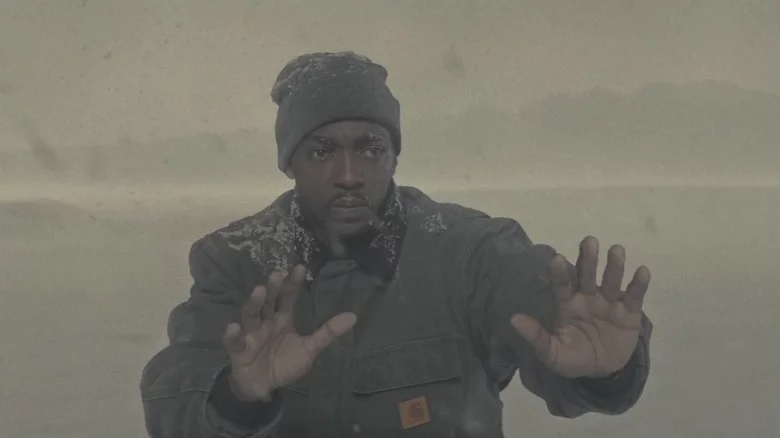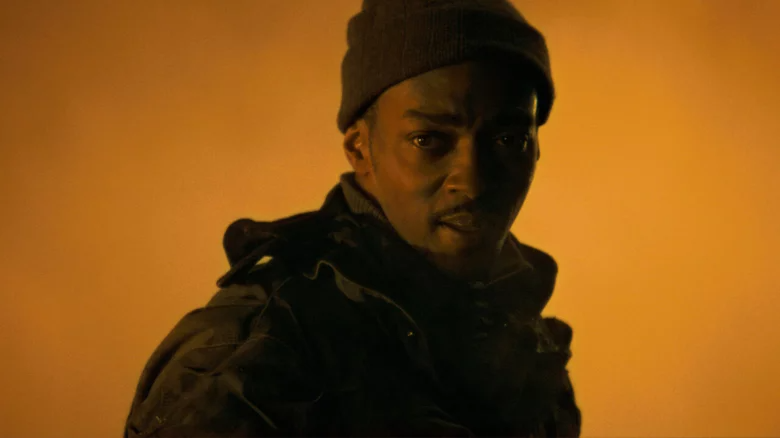With their 2019 science fiction drama “Synchronic,” Justin Benson and Aaron Moorhead’s creative team attempted the impossibly difficult task of making a time travel movie. “Synchronic,” a New Orleans-based drama, takes its title from a time-traveling designer medication that has recently entered the market. The movie’s popularity skyrocketed when it became available on Netflix in 2020, and it topped the list of most-watched movies for several days in a row. The paramedics Steve and Dennis in “Synchronic” are played by Anthony Mackie (“The Falcon and the Winter Soldier,” “The Hurt Locker”) and Jamie Dornan (“Fifty Shades of Grey,” “Barb and Star Go to Vista Del Mar”) as best friends entrusted with examining the effects of the drug. The two quickly come across remains that have been brutalised in mysterious ways, such as being stabbed with antiquated weapons, burned alive, or mauled by extinct creatures.
When they find out that Brianna, Dennis’ adolescent daughter, took the drug but hasn’t yet returned to the present timeline, everything becomes more intense. Steve discovers that Synchronic has been discontinued and purchases the last of the product from a smoke shop. Later, when he encounters the drug’s inventor, he learns that Synchronic modifies the pineal gland’s view of time. This makes it simple for individuals (like teens) with non-calcified pineal glands to travel across time. Adults, on the other hand, only appear to travel through time partially like ghosts.
A Journey To Find Brianna
When Steve learns that he has a tumour on his pineal gland, he can use this strange “blessing in disguise” to use his Synchronic supply to find Brianna. After using Synchronic, he notes his findings and learns that the destination year depends on where the pill is taken and that it allows users to travel back in time for seven minutes in the same location. His journey through time is hazardous because, unfortunately, some eras were much more hostile toward people who resemble Steve. This is true not only because he is using designer drugs, but also because he is ending up in times like the ice age (which, at this rate, could also be the future) or the 1920s, which were rife with the KKK. But as he goes, he learns that, as long as he makes direct touch, he can bring things or people back.
Dennis is finally informed of Steve’s malignancy and his efforts to track down Brianna. Steve travels across time to find her after the two figure out where she is by discovering the word “Allways” engraved into a boulder near where she used to sit in the park. During the 1815 Battle of New Orleans, the two meet up once more. In order to get away, he offers Brianna his final Synchronic pill, but a thief who thinks Steve is a fugitive slave intercepts them and puts both of their lives in danger. Brianna is able to find the right location to safely return home thanks to Steve’s distraction, but he is unable to follow her because he wasn’t in communication with her.
Did He Stay on Purpose?
The lovely thing about “Synchronic” (and all of Benson and Moorhead’s movies) is this: The resolution is neither ham-fisted or spoon-fed to you. It may be annoying to have questions about a character’s motivations after watching a movie, but in “Synchronic,” that’s half the enjoyment. The spectator will have to decide whether or not the information I omitted from this explanation of the conclusion is important.
Since 2012’s criminally underappreciated “Resolution,” Justin Benson and Aaron Moorhead have collaborated on movies, and each of their productions has left spectators wanting more and formulating their own hypotheses. There are many different ways the finale of their romantic horror movie “Spring,” which probably has one of their most conclusive finishes, can be evaluated or interpreted. With the partly sequel (depending on your perspective) “The Endless,” “Resolution” had somewhat of a second chance, but trying to analyse it all would require writing a psychology textbook.
There isn’t anyone else like them working today (I said what I said!). The films of Benson and Moorhead invite your interpretations, your feelings, and your perceptions to be active players in the film’s messaging. “Something In The Dirt,” a new movie from the team that will make its Sundance premiere this year, is about supernatural occurrences in a Los Angeles apartment that send two neighbours down a dark rabbit hole where they discover the dangers of what they’ve seen, the city, and each other. Do yourself a favour and hunt up Benson and Moorhead’s other movies if you enjoyed “Synchronic” and are seeking out more films that require you to consider what you have viewed.



